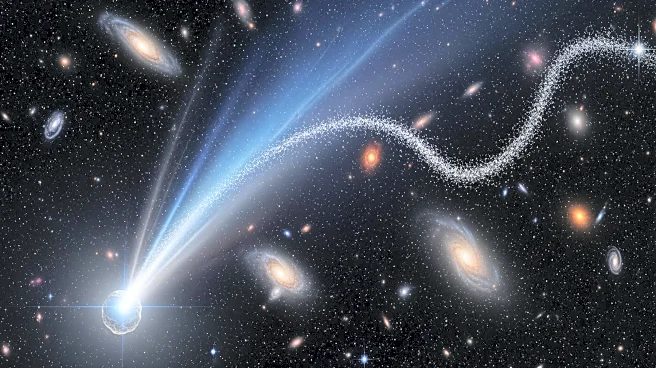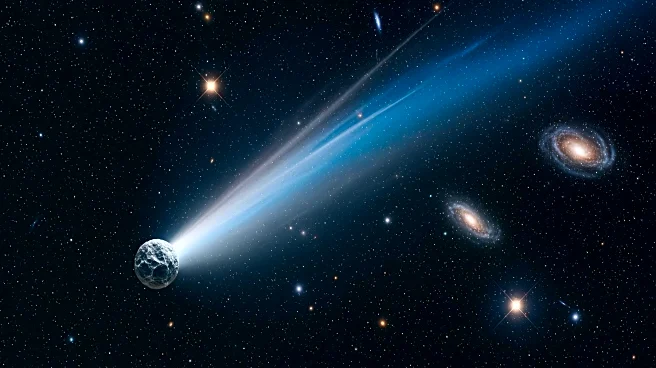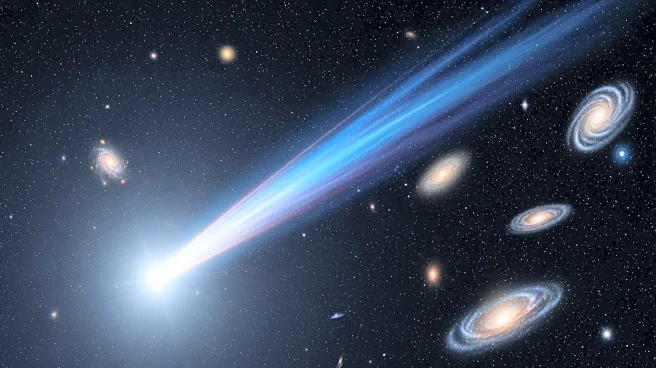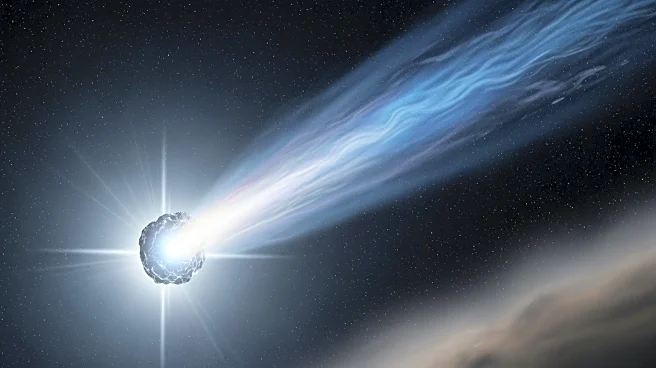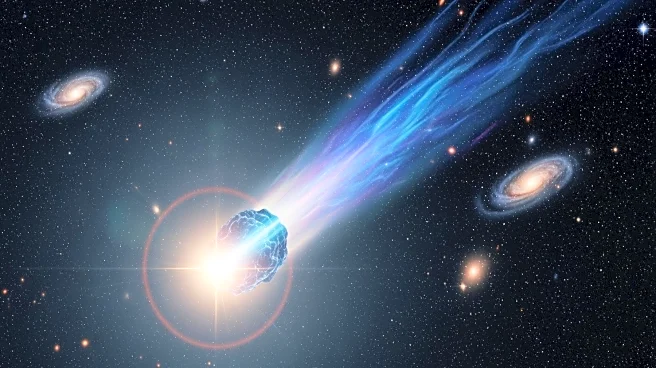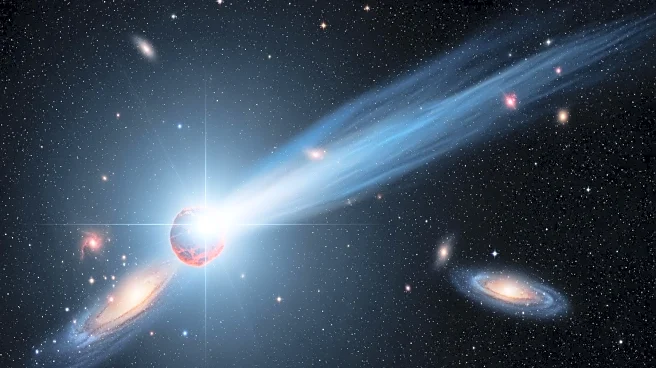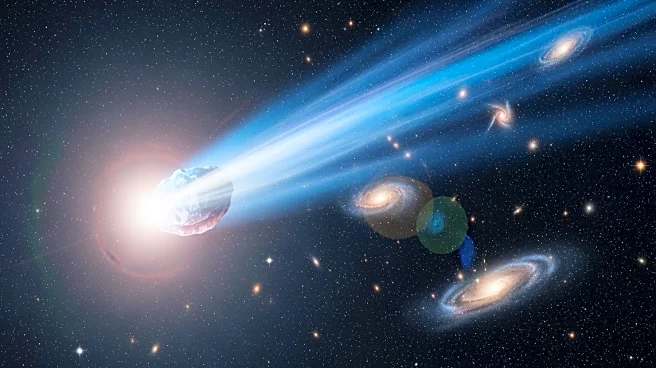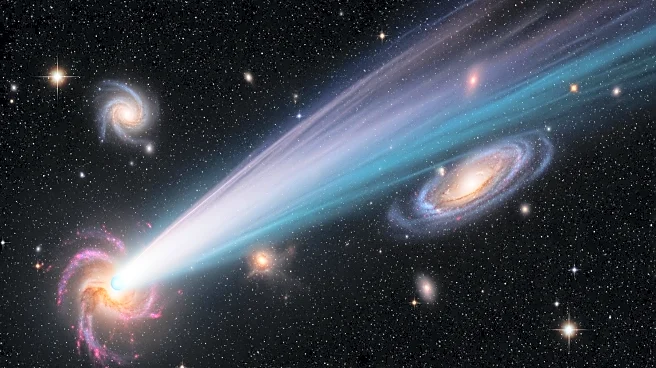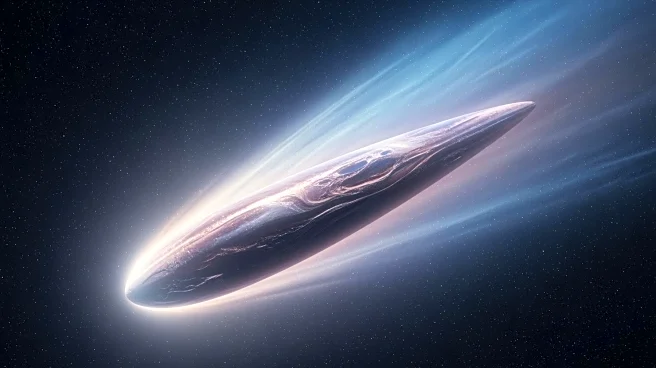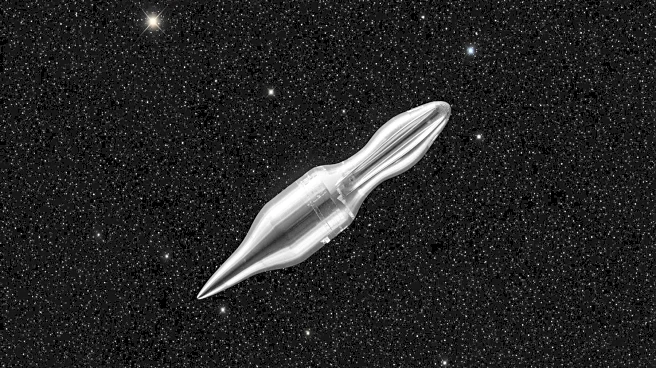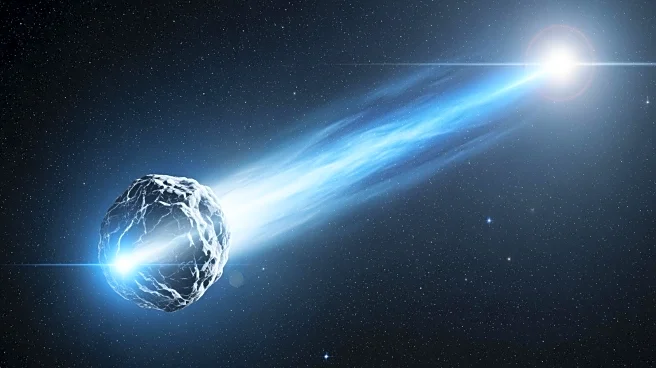What's Happening?
Astronomers have made a groundbreaking discovery by detecting nickel vapor in the interstellar comet 3I/ATLAS, which is currently traveling through our solar system. This detection was made at a significant
distance from the sun, where temperatures are typically too low for metals to vaporize. The comet, identified by the Asteroid Terrestrial-impact Last Alert System (ATLAS) on July 1, 2025, is only the third confirmed interstellar object. Unlike its predecessors, 'Oumuamua and comet Borisov, 3I/ATLAS was detected early in its journey, allowing scientists to observe its chemical changes as it approaches the sun. The presence of nickel, without concurrent iron detection, suggests unique chemical processes at play, possibly involving nickel bound in molecules that decompose under solar radiation.
Why It's Important?
The discovery of nickel in 3I/ATLAS is significant as it provides a rare opportunity to study materials from beyond our solar system, offering insights into the chemical composition of distant star systems. This finding could enhance our understanding of the building blocks of planetary systems across the galaxy. The unusual chemical signature of nickel, without iron, challenges existing theories and suggests new mechanisms of metal release at lower temperatures. Such research could inform our knowledge of planetary formation and the diversity of materials in different stellar environments, potentially impacting astrophysics and planetary science.
What's Next?
As 3I/ATLAS continues its journey towards its closest approach to the sun on October 29, 2025, scientists anticipate further increases in activity and the emergence of new chemical species. The international team monitoring the comet, including researchers from various countries, will continue to gather data, which may reveal more about the comet's origins and its journey through interstellar space. These observations will contribute to a broader understanding of whether planetary building blocks are consistent across the galaxy or vary significantly between star systems.
Beyond the Headlines
The detection of nickel in 3I/ATLAS without iron suggests that nickel may be released through processes involving molecules that decompose under sunlight, rather than direct sublimation. This could indicate the presence of complex organic compounds in the comet, offering clues about the chemical processes in interstellar space. The findings also highlight the importance of international collaboration in space research, as scientists from multiple countries work together to unravel the mysteries of interstellar objects.
